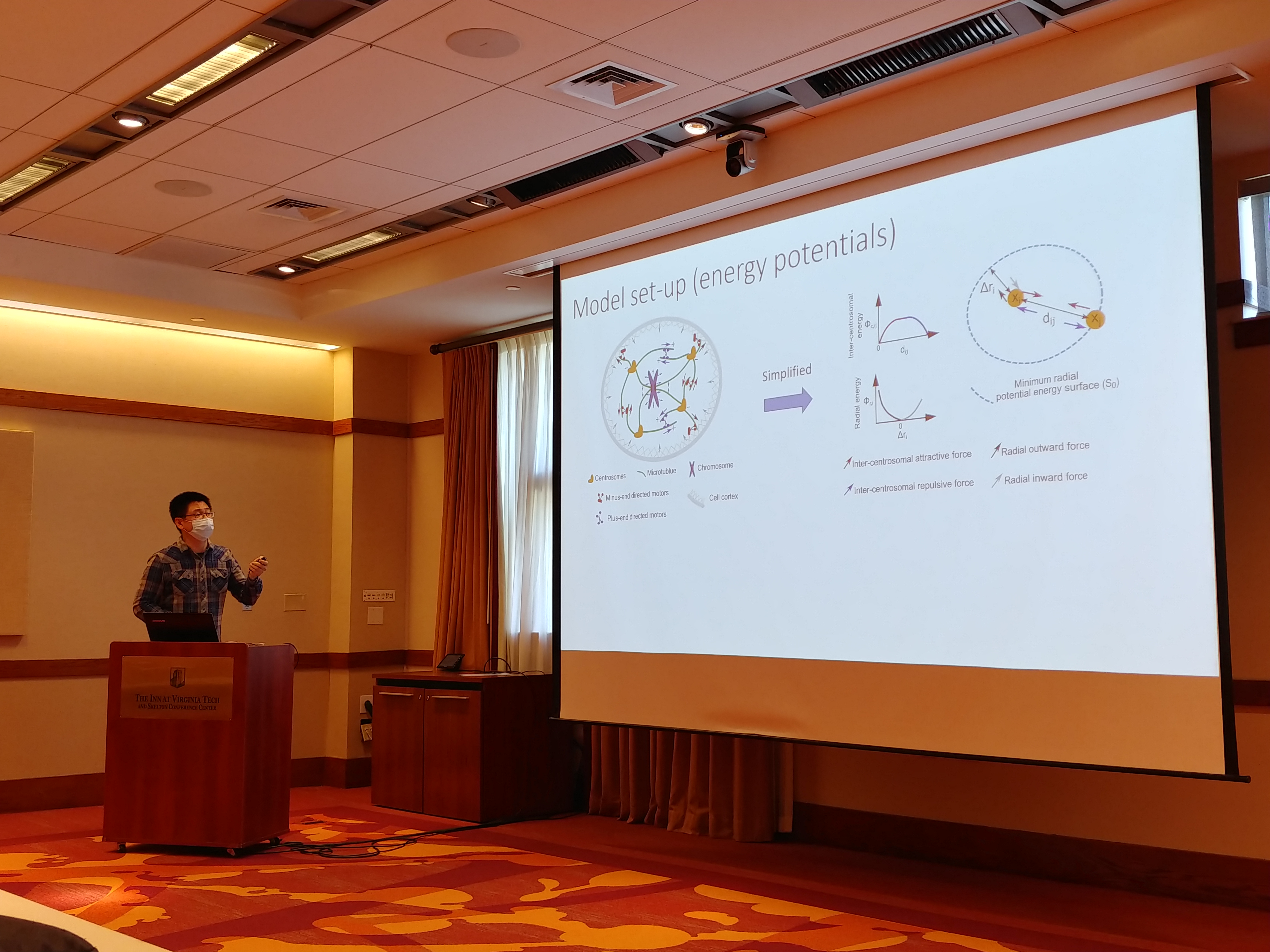Title: Mathematical Modelling of Motility Regulation in Myxococcus xanthus
Abstract: Sensing and responding to mechanical cues in the environment are important for the survival and propagation of bacteria. A ‘social’ bacterium, Myxococcus xanthus, which exhibits periodic cell reversals, modulates its reversal frequency in response to environmental mechanical cues, such as substrate stiffness and cell-cell contact. Here we hypothesize that the gliding motility machinery of M. xanthus can sense the environmental mechanical cues during force generation and modulate the timing and frequency of cell reversal through signaling the cell’s reversal control pathway. To examine our hypothesis, we extend an existing mathematical model for periodic polarity switching (which mediates periodic cell reversal) in M. xanthus, and incorporate the experimentally suggested (i) intracellular dynamics of the gliding motors and (ii) interactions between the gliding motors and reversal regulators. The model results indicate that the experimentally established interaction between the gliding motors and reversal regulators is capable of generating the observed modulations on cell reversal frequency with varied substrate stiffness. Our model prediction also suggests that social twitching motility in wild type M. xanthus is also involved in mediating the mechanosensitive reversal regulation. Furthermore, we propose a reversal control network that qualitatively explains the reversal behaviors in different M. xanthus mutants. In summary, our model highlights a potential role of the gliding machinery of M. xanthus as a ‘mechanosensor’ that transduces mechanical cues into a reversal control signal.

